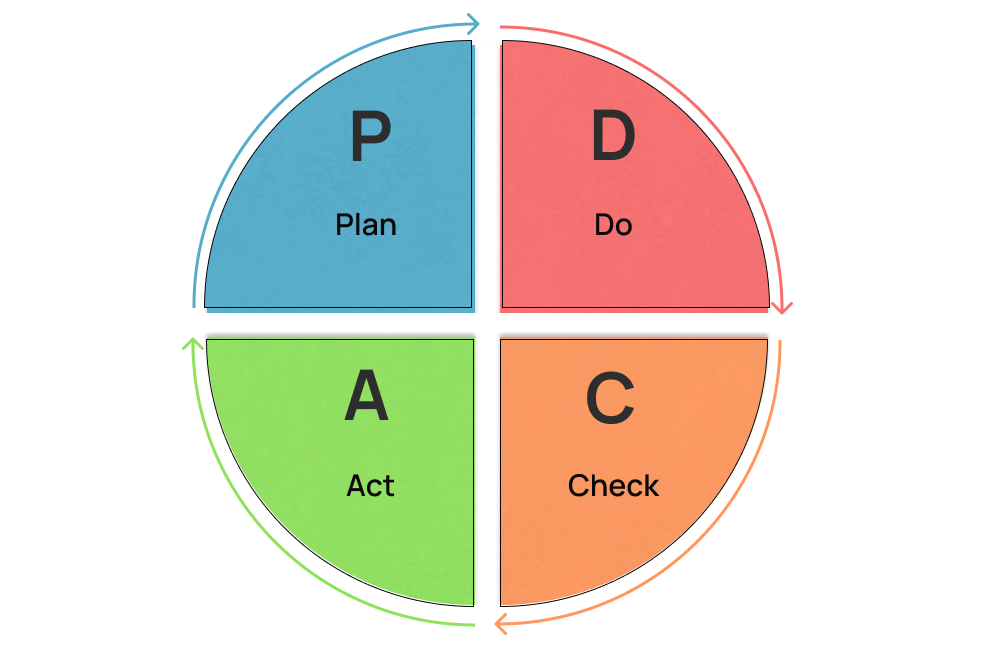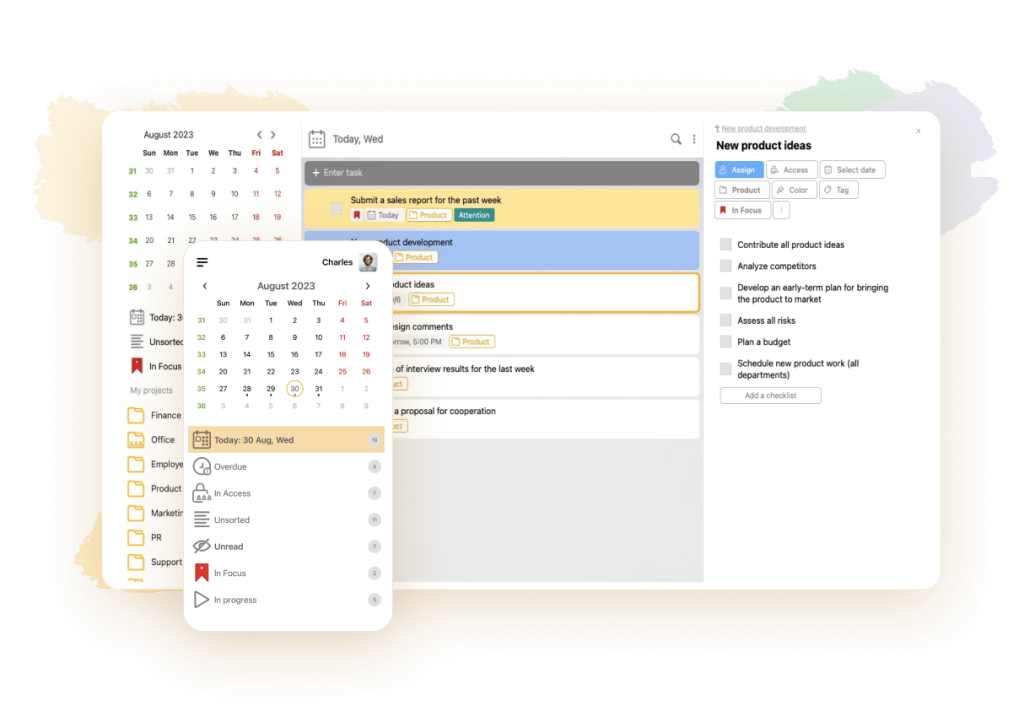The Deming Cycle PDCA

The Deming cycle, or PDCA, is a well-known design and management method used in business for continuous improvement of processes and products. It is used by world-renowned companies, including Nike and Toyota. At the same time, it is suitable for solving not only work, but also personal tasks. Deming’s cycle consists of the following stages: P (plan), D (do), C (study) and A (act). After passing all the steps, the circle is repeated again.
Brief history

The basis of the PDCA method can be found in the 17th century. More specifically, in the ideas of the English philosopher and statesman Francis Bacon. His scientific method is briefly described by the formula “hypothesis-experiment-evaluation”, if we paraphrase it, we get “plan-act-verify”. Bacon’s views in the 20th century inspired Walter Andrew Schuchart, an American scientist and consultant on quality management theory. In fact, he invented the cycle later named in Deming’s honor.
Then what does Deming have to do with it? William Edwards Deming is a compatriot of Schuchart, and a scientist, statistician, and management consultant who wrote books and articles, gave lectures, and participated in censuses. After World War II, Deming worked in Japan, and impressed the locals so much that in 1951 he was named after an award that honors companies and individuals for their achievements in quality improvement. Deming promoted Schuchart’s work so zealously that the public attributed the PDCA to him. In reality, the method is more properly called the Deming-Schuchart cycle.
The essence of the Deming cycle

PDCA is an abbreviation of words plan, do, check and act. Behind them lies a simple sequence of actions:
- Plan. Develop a clear plan. It is convenient to break the task down into several points. First, diagnose the problem. Then examine how the solution might affect your goals. Next, analyze it. Afterward, identify the steps to implement the plan. It is important to set specific, measurable, achievable, relevant, time-bound goals, as the Smart Method teaches.
- Do. Proceed according to the outlined plan. It is recommended to start with a small test project to minimize risks. Another task of the second stage is information gathering.
- Check. Check the collected information, compare the obtained result with the planned one. Sometimes the third stage is changed to study, and the method itself is renamed – PDSA. The second option was preferred by Deming. In this case, it is necessary not just to check the information, but to analyze it carefully.
- Act. Learn from the lessons learned along the way. If the planned results were achieved, the project can be scaled up. If something didn’t work out, the wheel starts again. But there is an important point. Ideally, the cycle should be continuous regardless of how the fourth stage ends, because there is a good chance that it will lead to new opportunities for improvement that need to be explored
PDCA and personal effectiveness
The Deming Cycle is more of a business story, but it is useful for personal tasks that have nothing to do with work. If you decide to try the PDCA method to improve your own effectiveness, try using it this way. In step P, realize what is holding you back, in which direction you want to develop. In step D, test different ways to achieve your desired outcome. In the third step – C – check to see if progress is being made. In the final step – A – implement what worked into your daily life. If some things didn’t work the first time, keep improving them by repeating the cycle.
The Deming Cycle for Business
Let’s look at an example of how the Deming cycle works in business. Let’s imagine a company producing furniture. Things were going well, but one day sales dropped. The problem has been identified. We need to understand where it came from. Is it caused by a general drop in demand in the market, the behavior of competitors or something happened inside the company. At the planning stage, it is useful to brainstorm collectively with representatives from different departments.
In the second step, steps are taken to achieve the goals. If the problem is found internally, try staff training or implementing new equipment. Initially, it is important to make sure that all employees involved clearly understand their roles, and to determine how actions and the results they led to will be documented.
Next, we check to see what happened. For example, you tried a marketing strategy that was new to you. See if it helped you attract customers or increase your average check. It is important to analyze both successes and failures so that you don’t repeat the same mistakes.
At the end of the work done, you can finally adjust the processes taking place in the company, introduce new standards of work. The last phase is dynamic. Here it is important to show the ability to adapt, to be wise and flexible at the same time. Let’s say you have presented another model of bed, but customers did not appreciate it. Think about what to change: materials, advertising, cost, design, to meet the demands of consumers.
The Deming Cycle & LeaderTask

LeaderTask to-do and task management service helps your team to work according to the PDCA method, adhering to the perfect order. It allows you to divide your action plan into tasks and assign their executors. There is a wide range of customization options for tasks: users can give them status, add detailed descriptions, attach files, set deadlines, and combine them into projects. There are Kanban boards for visual demonstration of the amount of work. In order for a manager to spend less time on routine activities, LeaderTask has created a bot that distributes tasks, asks clarifying questions, reminds about deadlines, and monitors the timeliness of tasks.
LeaderTask comes in handy at the information gathering stage. This is where the tool for displaying statistics comes into play. You can see a productivity scale plus a schedule of tasks, which makes it possible to assess how an individual employee is working. For effective personnel management, it is useful to assign roles to everyone in the workflow.
Results
The PDCA method, which symbolizes the principle of repetition in problem solving, is often used in the implementation of lean manufacturing concepts designed to streamline business processes. On the downside, you should not expect quick results, and the Deming cycle is not suitable for burning tasks. As for the pluses. Among them – more productive work of employees, because it is under constant control; there is no risk to fail in a big way, because the tests start with small projects; it is easier to find weaknesses and get rid of them. For many years of its existence PDCA has become a classic method that has proven its high efficiency many times.



